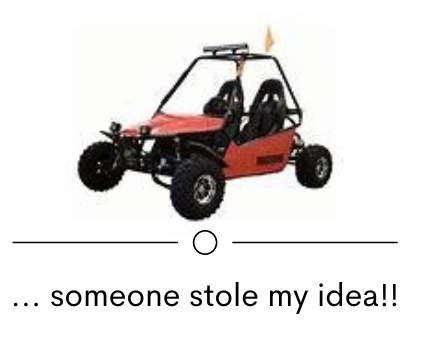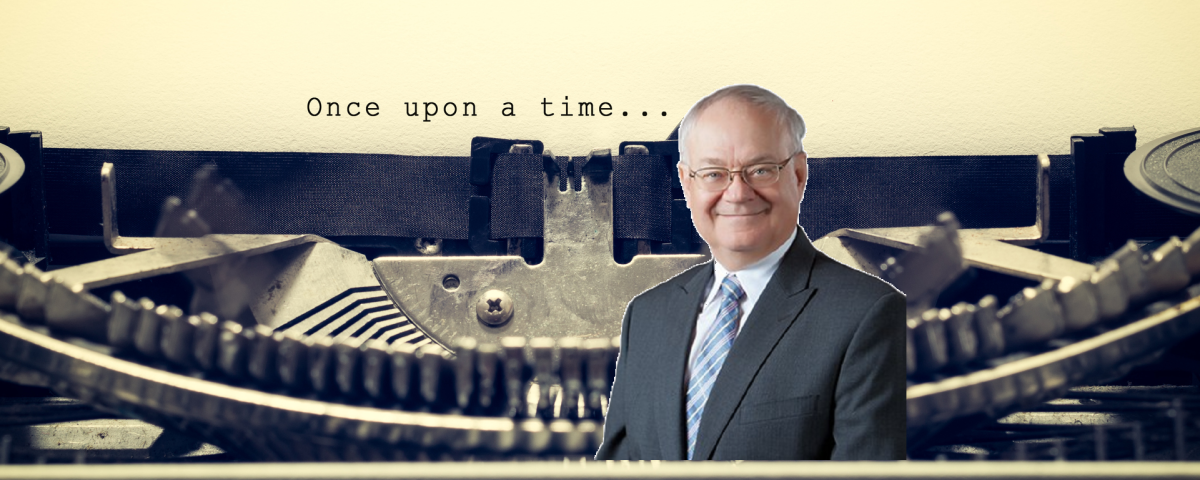Somehow we kids acquired a red Radio Flyer wagon. If we squished together we could get our three little butts inside the iron rim of the wagon and keep our feet from dragging if someone pulled us. We were young. I think I was about 8 and my two sisters were younger. So, we could fit.

The hill coming down toward the house from the fuel tank at the top was not quite steep enough for a good run and it usually had gullies washed out from the spring rains that could throw even a good bronc rider from the wagon. The hill from the house down to the stack yard was longer and steeper and more exciting, especially because the fence at the bottom of the hill had barb wire between fence posts stretched about throat high. A rider could use the handle to turn the wagon, but it took practice, painful practice, to turn the wagon after it slowed enough to avoid tipping over and soon enough to avoid the fence. The handle could be a man-killer all by itself. When a clod of dirt hit one wheel, the handle whapped the inattentive driver beside the head. When the fence stopped the roller coaster ride, the handle invariably impaled the driver and maybe one or two layers of passengers behind. Calvin and Hobbes had nothing on us!

But the major problem was getting someone to pull the wagon. There was a lot more level ground than there were parent-approved hills. Usually, the duty to pull fell on the oldest child. And I was the oldest child. Not good.
So, when mom got a new fancy electric motor for her washing machine, I glommed onto her old gas motor.

I filled its little gas tank with gas and wrapped the rope around the pulley so I could pull the rope and start the engine. There is a right way and a wrong way to crank an engine to make it start. But which way? The pulley had a notch to hold the knot at the end of the rope. Of course, there was only one way to wrap the rope. The notch was my friend. It slanted the correct way so I wouldn’t try to crank the engine backwards. The rope had a nice wooden handle, another friend. I did not need to wrap the rope around my fist or my arm and maybe get my arm jerked off if the engine backfired!
Like any true Briggs and Stratton I have worked with before and after, the engine tested my patience. Luckily, it was hard to destroy a Briggs, even with a hammer. I tried. Dad rescued the engine by showing me where the choke lever was and how to put a foot on the gas tank to get a firm pull on the rope without tipping the engine onto its face. The old engine came to life and shook and rattled and blew smoke out of the exhaust, some of which actually went through the tiny muffler that didn’t muffle much anyway but did get hot enough to fry bare skin in about two seconds flat.
With a tested and proven power source, I surveyed the scrap iron pile beside dad’s shop. I searched for some sort of drive shaft or transmission device to connect the engine to a wagon wheel. I found a bent wheel bearing cap that had flanges. It looked like a miniature derby hat. I found a worn out fan belt. I knew I had everything I needed. With a couple of holes drilled through the cap I screwed the cap backwards onto the beveled side of the wagon wheel. The flanges of the cap flared outward, like a derby would look if its top was bolted to the back side of a salad bowl. The flanges of the cap and the bevel of the wheel made a nice V-shaped groove around the hub. The fan belt snugged right into the V-shaped groove like it was right at home. Well, except for the wobble where I overlooked the alignment part of the assembly process.
The fan belt was a little too long but adding a short hunk of 2X4 board for spacing raised the engine and snugged the belt up pretty nicely. To hold the engine and board in place, I drilled holes through the 2X4 but had to do some fast talking to avoid getting pounded by my sisters. They valiantly protected the red wagon’s nice shiny red-painted tin bed. But they went away after awhile and I quickly got dad’s electric drill going for the holes through the tin. I rustled up some rusty bolts from the tractor toolbox and even found nuts for the bolts. I found flat washers to protect the soft tin of the wagon bed for a couple of the bolts and decided that two out of the four was good enough.
With the engine bolted in place, it was test ride time. I got the engine running and hopped into the wagon. But nothing happened. The belt was too loose to turn the wagon wheel. I held a stick against the fan belt to make it tight against the engine pulley and against my manufactured wheel pulley. But as soon as the belt started to actually turn it jerked the stick right out of my hand. So back to the drawing boards.

Dad showed me the fan belt on the pickup engine and the idler pulley with a spring that kept the belt tight. In that fabulous iron pile I found a worn-out pulley from an orange mower. I wrapped baling wire around each end of a bolt through the pulley. I tied the wire to a busted screen door spring and hopped in again. I held that spring as tight as I could and by golly it worked! The idler pulley pulled the belt tight enough that the motor could actually get the wagon moving.
I was overjoyed! I had made it work! Sure, sure, there were things to improve, but I could see the future. Rolling down the hill and riding back up. Racing along the road raising dust like a race car. Maybe Mom would let me drive the three miles to school all by myself. The future was bright.
My sisters seemed less than impressed. With the engine in the back seat, so to speak, there was not room for passengers. The engine was hard to start. It was noisy and hot. While I was gone helping in the hayfield one day my sisters took the engine out and flew down the hills the old-fashioned way.
I was shocked! How could they decide that the old way was better than my new way!?? My invention and innovation bit the dust! I was sad. Sad that no one saw the future that I saw. Sad that my idea died such a sudden and ignominious death. I felt ashamed. Maybe it was a stupid idea after all.
Dad saw the de-engined Radio Flyer and saw my dejection. He put his arm around my shoulder and said, “Boy, you had a good idea. You built the project yourself and you learned something new. I am proud of you.” I felt better. Until ......




